Katrin Olina combines digital and bronze-age techniques to create Primitiva jewellery
Icelandic designer Katrin Olina has crafted a range of jewellery that looks like gothic talismans but is designed and produced using both old and new techniques (+ slideshow).
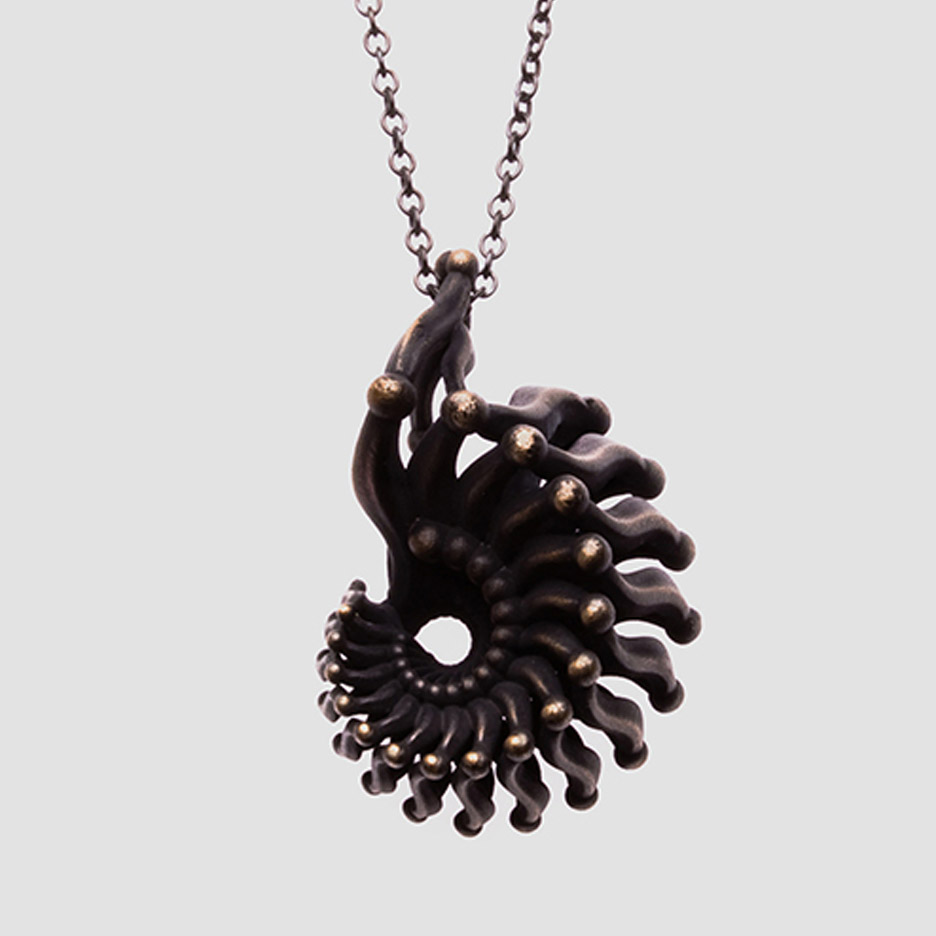
Based on the serpentine curve described as "the line of beauty" by artist William Hogarth in 1753, the Primitiva series was designed digitally, 3D printed in wax and then cast in bronze.
"The S-curve is a universal motif found throughout nature and human history," Olina told Dezeen. "I was inspired by Hogarth's curve and created my own 3D version of it."
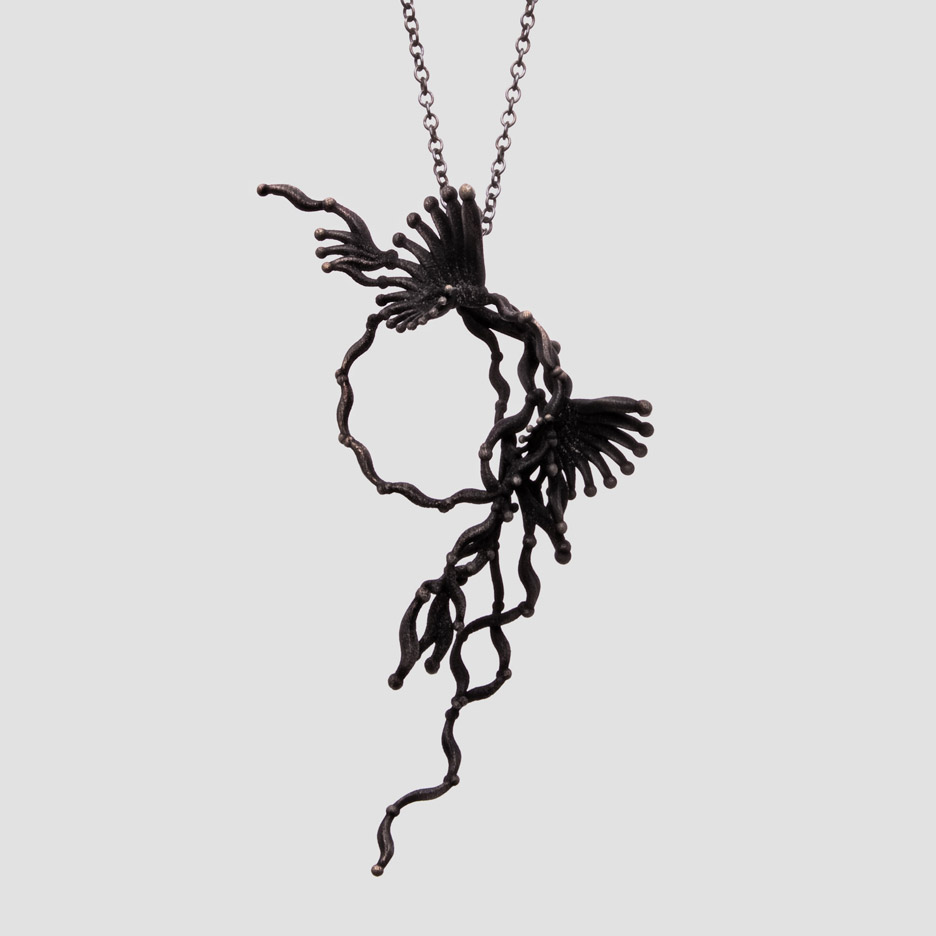
"My curve has two spheres on each extremity," she added. "The simple and yet complex basic shape allowed me to create this diversified language of shapes."
Olina created 40 variations of this curve using parametric design software for her series of talismans, which she describes as "objects of awareness" and are designed to ground the wearer in the physical world.
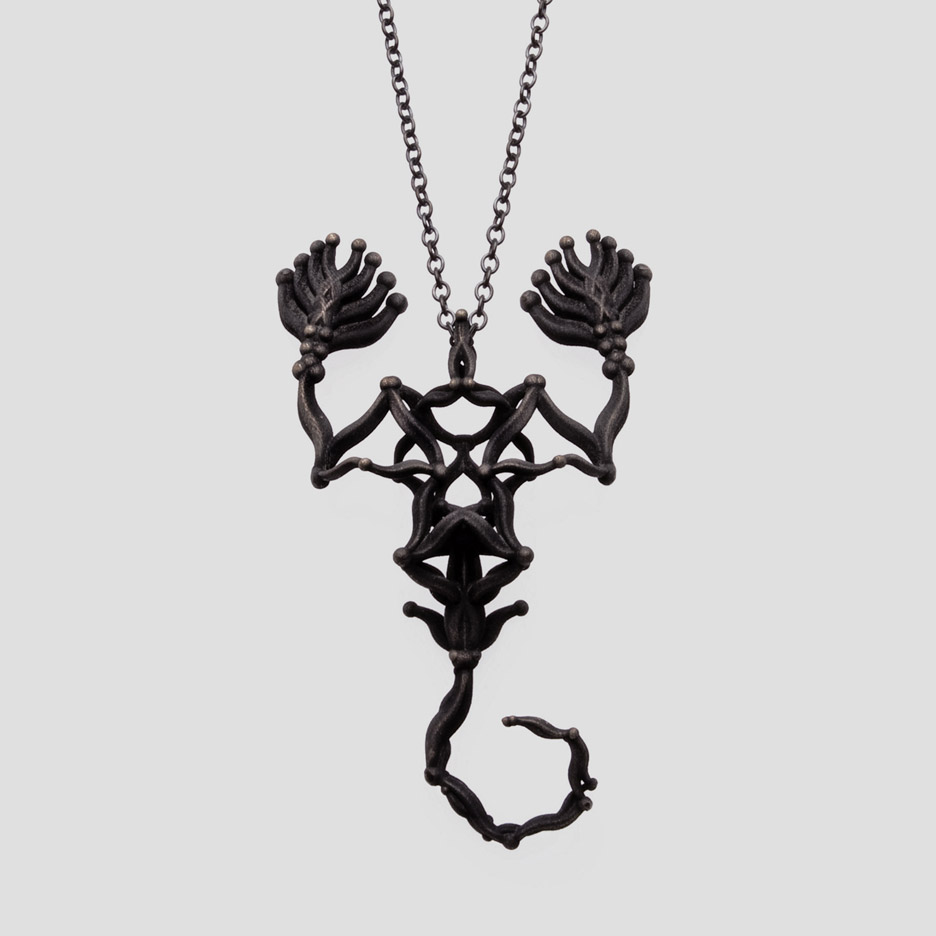
"The project questions how we can connect in a technically entangled, yet disconnected world," said the designer.
"I decided to work on jewellery, because of its long tradition in cultural history to be a connector between the abstract and the physical and a carrier of social significance."

During the parametric design process, dramatic forms can be achieved by altering a set of variables that change the shape of a digital model.
Olina's 40 Primitiva designs are ordered into a taxonomy of four kingdoms – the Kingdoms of Seekers, Connectors, Doers and Visionaries – based on aspirational traits.
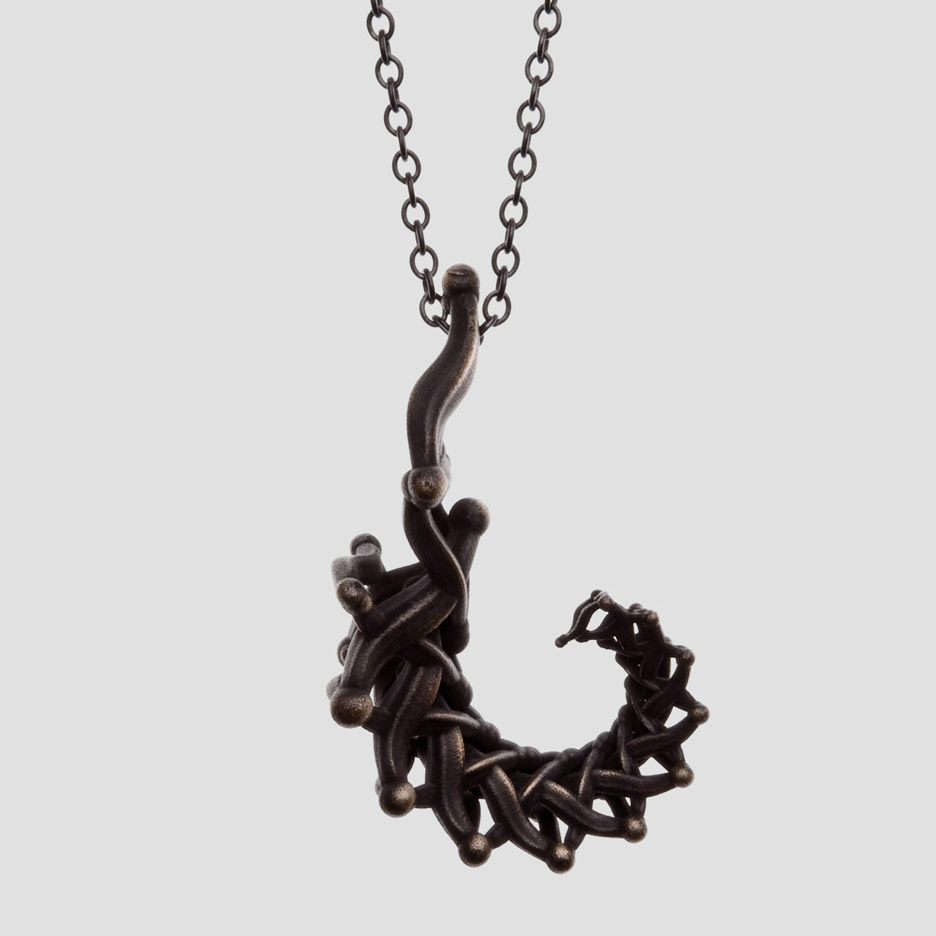
These ideas are explored in a book accompanying the collection, titled Primitiva – Book of Talismans.
Olina developed the project while working as a guest researcher at the Aalto University Digital Design Laboratory and the Helsinki International Artist Programme.
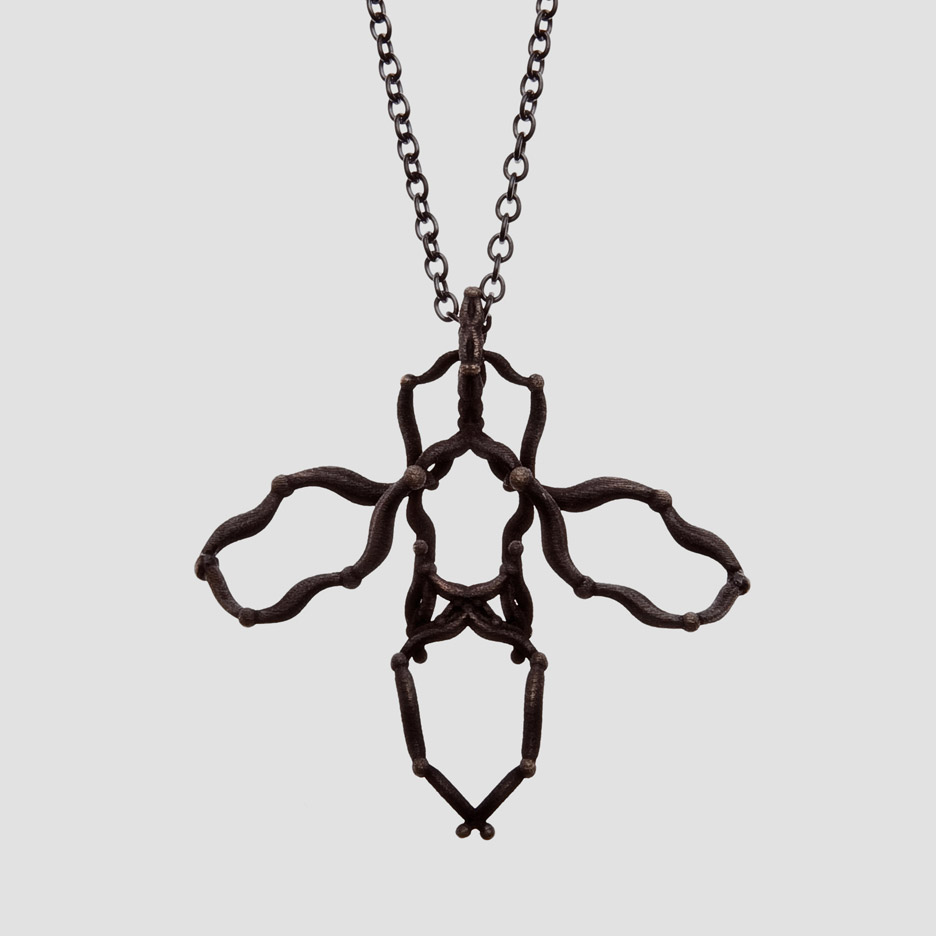
She developed her 40 variations of the basic curve using the software Autodesk Maya, and then 3D printed wax models from these digital models.
The jewellery was cast by Olina's production partners at Kalevala Koru, Finland's largest jewellery manufacturer, using the prehistoric lost-wax method, where the wax is melted to leave a cavity in a fireproof mould.
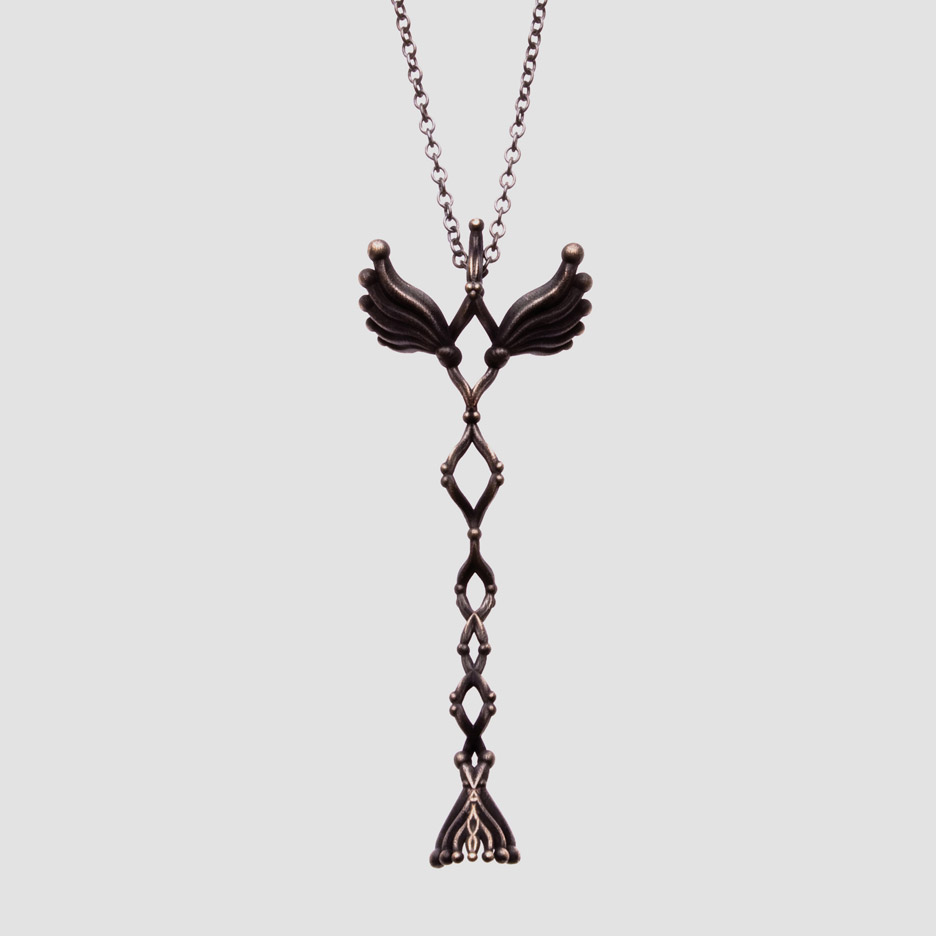
"What is great about 3D printing and digital technology is the possibility of generating and physically producing something that would be otherwise next to impossible to make by hand," said Olina.
References to "natural sciences, antique artefacts, mathematics and gothic architecture" all combined in the jewellery pieces, which are covered in a black patina that wears off gradually to reveal the shining bronze beneath.
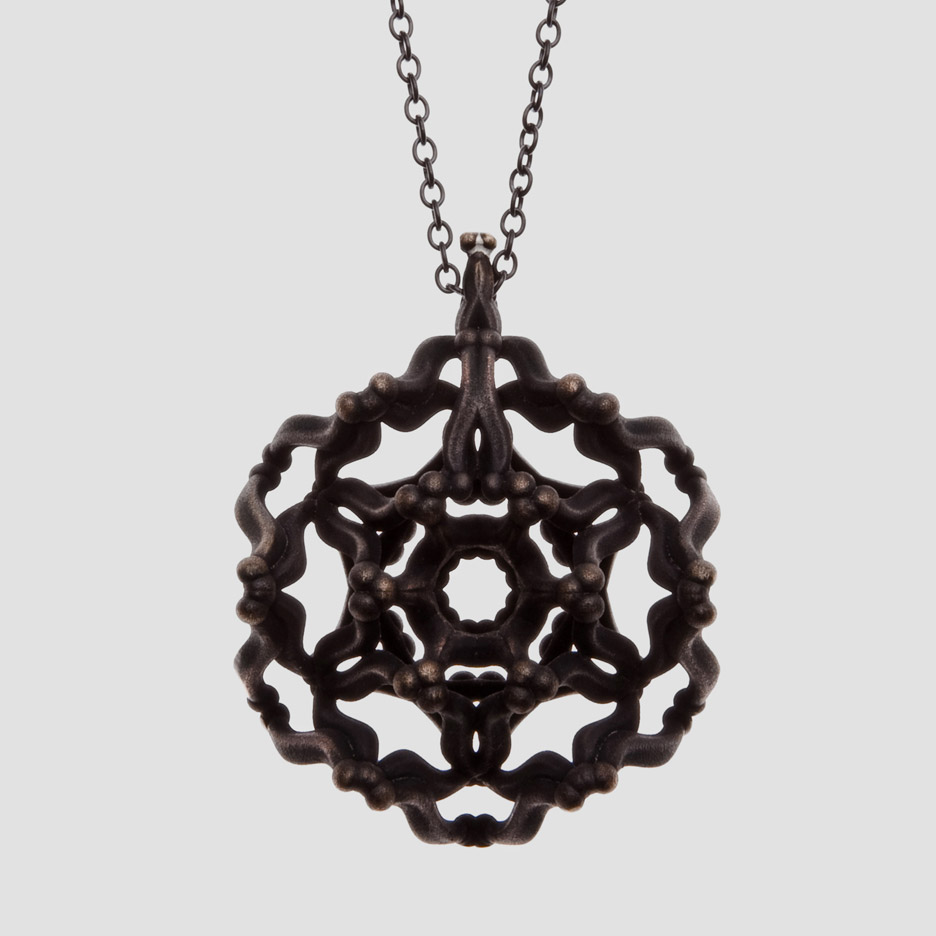
Olina frequently uses metal in her design work, including a series of furniture made by shaping steel tubes with an old exhaust pipe bending machine, and a collection of circular aluminium tables that contrast raw and uneven sand-cast surfaces with precise laser-cut legs.
Photography is by Sebastian Jansson.